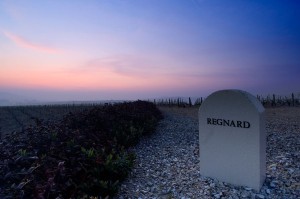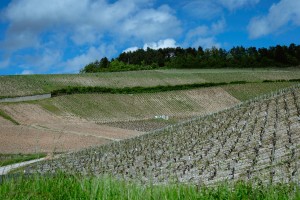Vineyard

Four Tiers of Chablis
The appellation of Chablis, created in 1938 for dry white wines made from Chardonnay, is defined by geological zones. The two different layers in the soil, Kimmeridgian and Portlandian, determine Chablis' appellation hierarchy. The Kimmeridgian soil, dating back to the Jurassic period, is composed of chalk containing a large quantity of sea fossils and is prized for its mineral-rich clay. Portlandian soils, by comparison, lack this minerality and generally produce fruitier wines. Chablis vineyards are categorized into four tiers of quality — the Chablis Grand Cru title is the most prestigious and is held under the most rigorous regulations.
Chablis Grand Cru
Chablis Premier Cru
Chablis
Petit Chablis
The Chablis Vineyards
The Chablis vineyards are sensitive to frost. Every year during the winter months, Régnard sprays them with water that freezes around the bud, preventing the bud itself from freezing.
All the varying soil types are vinified separately to preserve their distinctive qualities: limestone produces a very perfumed wine which is delicate in style; flint produces wine with more depth and mineral character; clay, located in the highest slopes, makes a firm wine with rustic characteristics.

